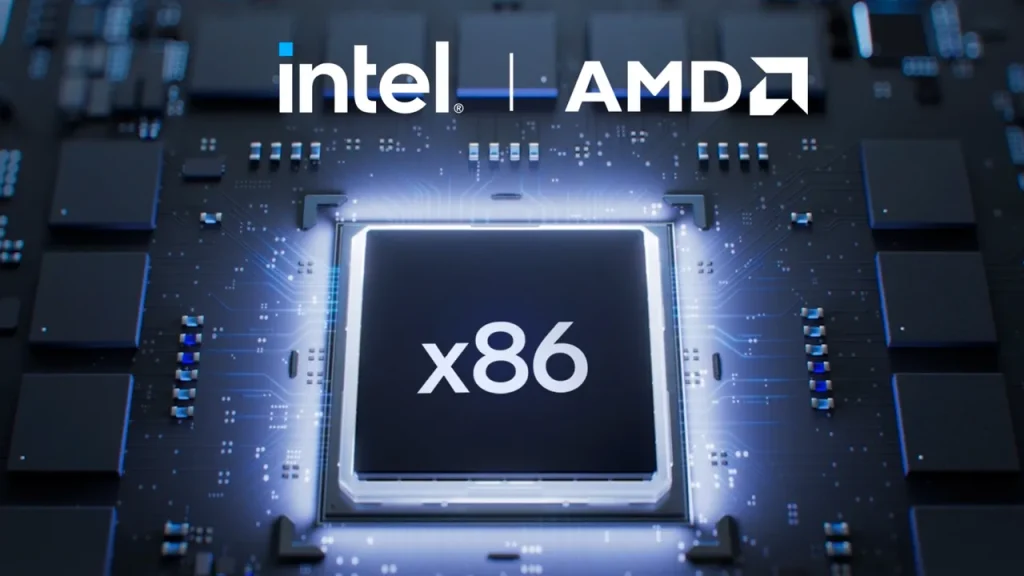The Future of CPUs
The semiconductor industry is witnessing a transformational era, with AMD and Intel leading the charge toward next-generation processor architectures. As we move into 2026, both companies are redefining the capabilities of CPUs with innovations in node fabrication, AI integration, efficiency, and architectural restructuring. These trends reflect a growing demand for faster, cooler, smarter processors optimized not only for gaming and professional workloads but also for AI acceleration and power efficiency.

AMD’s Chip Evolution: From Zen to Beyond
Zen 5 and Zen 6 Architecture
AMD’s Zen architecture has been central to its resurgence in the CPU market. With Zen 4 delivering PCIe 5.0 and DDR5 support in 2022, the momentum continued with Zen 5 in 2024. By 2025–2026, AMD is expected to roll out Zen 6, marking the next chapter in performance-per-watt gains, AI inference capabilities, and advanced core interconnectivity.
Future AMD Chips Overview
| Generation | Year | Node | Key Features |
|---|---|---|---|
| Zen 5 | 2024 | TSMC 4nm | Reworked front-end, higher IPC, AI engine |
| Zen 5c | 2025 | TSMC 4nm | Compact cores for efficiency clusters |
| Zen 6 | 2026 | TSMC 3nm | Next-gen cache system, improved threading, energy-efficient AI cores |
Zen 6 is rumored to include 3D V-Cache stacking improvements, allowing increased L3 cache sizes for enhanced gaming and compute performance.
Intel’s Roadmap: Meteor Lake to Nova Lake
Intel has shifted from monolithic designs to a tile-based architecture, giving rise to a modular future with Meteor Lake, Arrow Lake, and Lunar Lake. These architectures are expected to revolutionize power efficiency and AI compute.
Intel Roadmap Key Milestones
| Architecture | Year | Process Node | Highlights |
|---|---|---|---|
| Meteor Lake | 2024 | Intel 4 | Foveros packaging, AI/NPU engines |
| Arrow Lake | 2025 | Intel 20A | RibbonFET transistors, PowerVia |
| Lunar Lake | 2026 | Intel 18A | Ultra-low power, targeted for mobile |
| Nova Lake | 2026+ | Intel 18A | Desktop performance leadership, restructured architecture |
Nova Lake is projected to be Intel’s largest architectural leap since Core, introducing a ground-up redesign with an emphasis on efficiency-first architecture, parallelized instruction dispatch, and AI/ML-specific cores.
Trends Shaping Future Processor Development
1. AI Integration in CPUs
With the rise of AI-driven tasks, both AMD and Intel are incorporating Neural Processing Units (NPUs) directly into their CPUs. This shift supports on-device inference, reduces cloud dependency, and enhances local productivity software capabilities.
-
AMD: NPU in Ryzen AI series (Zen 5)
-
Intel: AI Boost Engine in Meteor Lake and beyond
2. Power Efficiency and Sustainability
Node shrinks (from 5nm to 3nm and down to 18A) allow for lower power draw and greater transistor density, addressing the demand for greener computing solutions. Intel’s PowerVia technology introduces a back-side power delivery system that reduces power loss and improves frequency scaling.
3. Chiplet & Tile-Based Scalability
The transition to chiplet (AMD) and tile (Intel) based design improves yield, customization, and scalability. It enables manufacturers to mix and match compute, GPU, and I/O tiles based on user-specific workloads, fostering tailored desktop and mobile solutions.
Desktop vs Mobile: How Futures Diverge
Desktop Processors
-
AMD: Focus on core count, cache, and thermal headroom
-
Intel: Push for modular chip designs, enabling hybrid scalability and next-gen overclocking
Mobile Processors
-
Intel Lunar Lake aims to outperform ARM-based competition in ultra-portable laptops
-
AMD Strix Point combines Zen 5 CPU cores with RDNA 3+ graphics and integrated AI accelerators
As laptops become creator and productivity hubs, future processors will emphasize battery efficiency, fanless thermal design, and instant-on features.
Cloud and Enterprise Applications
In server and data center segments:
-
AMD EPYC Turin (Zen 5/6) is expected to dominate multi-core scaling, targeting cloud workloads, AI inference, and memory bandwidth-intensive applications
-
Intel Xeon Granite Rapids and Sierra Forest will focus on efficiency vs performance cores, supporting cloud-native workloads, particularly in hyperscale and containerized environments
These chips will drive CPU trends in data density, modular deployment, and power-per-rack metrics.
How AMD and Intel Will Shape Processor Trends
| Key Trend | AMD Strategy | Intel Strategy |
|---|---|---|
| AI Integration | NPUs in Zen 5 and 6 | AI Boost in Meteor & Lunar Lake |
| Efficiency | TSMC 3nm, Chiplet scaling | Intel 20A/18A, PowerVia |
| Performance | 3D V-Cache, High IPC Zen 6 | Nova Lake’s redesigned cores |
| Architecture | Refined Zen iterations | Ground-up overhaul with modularity |
| Platform Longevity | AM5 socket through 2027 | LGA1851 (next-gen) likely in 2026 |
Both companies aim to deliver top-tier performance at lower thermal and power costs, setting a new industry benchmark for processor development.
What to Expect by 2026
By 2026, the landscape of CPUs will be fundamentally reshaped. AMD will continue to build on the success of its Zen chiplet architecture, evolving toward ultra-efficient, AI-centric designs. Intel, meanwhile, is redefining its place in the market with tiled modular CPUs that aim to offer higher burst performance, scalable deployment, and deep integration with next-gen compute workloads.
The race is no longer just about GHz and core counts, but about how intelligently a processor can execute workloads while balancing power, thermals, and software adaptability. The future AMD chips and Intel roadmap point toward a new era of computing where efficiency, modularity, and intelligence are just as important as raw performance.
As both brands aggressively evolve, consumers and enterprises can look forward to more customized, powerful, and sustainable processors that adapt to their ever-growing digital demands.




